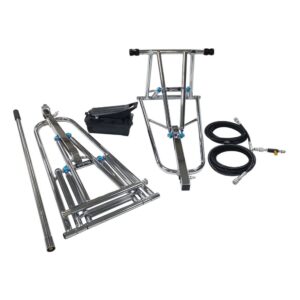Curious about the difference between a Challenger and a Charger? Well, the answer might surprise you. While both are iconic muscle cars in the Dodge lineup, they do have their own unique characteristics that set them apart. So, if you’re ready to dive into the world of powerful engines, sleek designs, and exhilarating performance, let’s explore precisely what distinguishes a Challenger from a Charger. Buckle up, because we’re about to embark on an exciting journey through the realm of muscle cars!
What is the Difference Between a Challenger and a Charger?
When it comes to American muscle cars, two popular models that often come up in discussions are the Dodge Challenger and the Dodge Charger. Both vehicles offer powerful performance, aggressive styling, and a thrilling driving experience. However, there are distinct differences between the two that make them unique in their own ways. In this article, we will explore the key contrasts between the Dodge Challenger and the Dodge Charger, from their design and performance to their features and practicality.
Design and Styling
One of the first noticeable differences between the Challenger and the Charger lies in their design and styling. While both vehicles boast a muscular and intimidating presence on the road, there are subtle variations that set them apart:
– The Dodge Challenger features a more retro-inspired design, paying homage to its classic muscle car heritage. Its wide and low stance, aggressive front grille, and prominent hood scoop exude a nostalgic charm that appeals to enthusiasts seeking a timeless look.
– On the other hand, the Dodge Charger embraces a more modern and dynamic design. With its sleeker profile, aerodynamic lines, and a four-door sedan configuration, it offers a blend of sportiness and practicality.
Performance
When it comes to performance, both the Challenger and the Charger offer exhilarating driving experiences, but the powertrain options and driving characteristics differ:
– The Dodge Challenger offers a wider range of engine choices, including powerful V6 and V8 options. Depending on the trim level, you can find engines ranging from the base 3.6-liter Pentastar V6 up to the monstrous supercharged 6.2-liter HEMI V8 found in the high-performance SRT Hellcat models. With its rear-wheel-drive platform and available all-wheel drive, the Challenger delivers thrilling acceleration and an engaging driving experience.
– The Dodge Charger, on the other hand, is known for its practicality without compromising performance. It offers similar engine options as the Challenger, although some trim levels are more focused on everyday drivability and comfort. The Charger also comes with all-wheel drive variants, making it a suitable choice for those seeking enhanced traction and stability in various driving conditions.
Interior Features and Space
While both the Challenger and the Charger prioritize driver-centric cabins and a sporty atmosphere, there are differences in terms of interior features and space:
– The Dodge Challenger places a greater emphasis on a retro-themed interior. It features a driver-oriented cockpit with large analog gauges, circular air vents, and available retro-inspired interior packages. The Challenger’s two-door configuration, however, means rear-seat access can be slightly more challenging, and the overall interior space is more limited compared to the Charger.
– The Dodge Charger, being a four-door sedan, offers more practicality and passenger comfort. It provides easy access to the rear seats and has a more spacious interior overall. The Charger’s interior design is slightly more modern, with a larger infotainment screen and a range of available comfort and convenience features.
Practicality and Everyday Usability
Considering practicality and everyday usability, the differences between the Challenger and the Charger become more evident:
– The Dodge Challenger, with its two-door coupe configuration, offers a more focused and driver-centric experience. It may not be as practical for passengers or cargo, but it excels in terms of a raw and exhilarating driving experience.
– The Dodge Charger, on the other hand, provides a balance between performance and practicality. With its four-door layout, it offers more versatility for passengers and can comfortably accommodate a family or group of friends. The Charger also has a larger trunk space, making it more suitable for daily errands and longer road trips.
In summary, the Dodge Challenger and the Dodge Charger are both iconic American muscle cars, each with its own distinct personality. The Challenger embraces a retro-inspired design and offers a pure two-door coupe experience with various high-performance engine options. On the other hand, the Charger combines performance and practicality, featuring a modern design and a four-door sedan configuration. Whether you prioritize nostalgia and raw power or you seek a balance between performance and everyday usability, both the Challenger and the Charger have something to offer for enthusiasts and everyday drivers alike.
By understanding the differences between these two Dodge models, you can make an informed decision based on your preferences, driving needs, and lifestyle. Whether you crave the aggressive styling of the Challenger or the practicality of the Charger, both vehicles are sure to provide an exciting and engaging driving experience.
2021 Dodge Challenger Vs 2021 Dodge Charger: Which Is The Best Fit For You?
Frequently Asked Questions
What is the difference between a Challenger and a Charger?
The Challenger and Charger are two popular models manufactured by Dodge, each with its own unique features and characteristics. Here are the key differences between the two:
What are the main design differences between the Challenger and the Charger?
The Challenger is a two-door coupe, whereas the Charger is a four-door sedan. The Challenger has a more retro-inspired design, paying homage to the classic muscle cars of the past, while the Charger has a sleeker and more modern appearance.
How do the performance capabilities of the Challenger and Charger differ?
The Challenger is known for its exceptional straight-line performance and is available with a range of powerful engines, including high-performance variants like the Hellcat and Demon. On the other hand, while the Charger also offers strong performance, it is often regarded as a more practical option, with additional passenger and cargo space.
What about the interior features of the Challenger and Charger?
Both the Challenger and Charger offer comfortable and well-designed interiors with modern features and technologies. However, the Charger’s four-door layout provides greater ease of access to the rear seats and offers more rear headroom and legroom compared to the Challenger.
Are there any differences in terms of handling and ride comfort?
The Challenger is more focused on delivering a thrilling and engaging driving experience, often prioritizing performance over ride comfort. In contrast, the Charger strikes a balance between sportiness and comfort, offering a smoother ride and a more refined driving experience.
Do the Challenger and Charger differ in terms of practicality and fuel efficiency?
The Charger, being a four-door sedan, generally offers more practicality with its additional seating and larger trunk capacity. Fuel efficiency can vary depending on the engine choice, but generally, the Charger tends to have slightly better fuel economy compared to the Challenger.
Final Thoughts
In conclusion, the key difference between a Challenger and a Charger lies in their design and performance. The Challenger is a retro-styled muscle car known for its aggressive appearance and raw power. It offers a variety of high-performance engines, making it an ideal choice for thrill-seekers and car enthusiasts. On the other hand, the Charger is a four-door sedan that combines muscle car attributes with practicality. While it shares some similarities with the Challenger, the Charger provides a more spacious interior and a smoother ride for those seeking a balance between performance and everyday usability. So, when it comes to choosing between a Challenger and a Charger, it ultimately depends on your preferences and lifestyle requirements.



